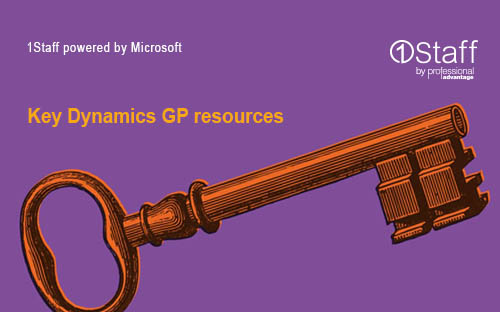One of our Microsoft Dynamics GP consultants shares their thoughts on the many rumors surrounding Dynamics GP.
If you are hoping this is about the celebrated Fleetwood Mac album from 1977, two things: 1) I wish, and 2) you fell for some old-school clickbait!
So, since you are here, stick around, have a read, and you will see the title is still apt. After all, there’s a difference between clickbait and bait and switch.
In the world of Dynamics GP, the ongoing rumor is that it will be discontinued by Microsoft. To my surprise, it has persisted for 2 years and is a concern I continuously field from clients. In short, the claim is false. The rumor emerged when Microsoft announced they would not be selling Dynamics GP to new customers and instead focus their attention on Dynamics 365 for Finance and Supply Chain, Dynamics 365 Business Central, and Dynamics 365. The announcement was misinterpreted to mean that they would cease supporting Dynamics GP and force the existing customer base onto one of the more expensive options. Again, this is not true. It’s time to dig a little deeper into that announcement and explain what it really means.
In the late 2000’s Microsoft revealed they would be investing less in expanding Dynamics GP’s functionality and more in Finance and Supply Chain (previously Finance and Operations), Business Central (previously NAV and Navision), and Dynamics 365. This was triggered by the increase in demand for cloud-based hosting, which Dynamics GP, at the time, did not support. So, the decision to cease selling Dynamics GP to new customers did not come as a surprise to ERP resellers. However, given Microsoft still had thousands of customers actively using Dynamics GP, even they knew they couldn’t force them to switch. As a result, they placed Dynamics GP into what is called the ‘modern lifecycle’, meaning they would continue issuing yearly version updates and quarterly patch updates. Part of this change meant Dynamics GP became supported in a cloud environment.
A cloud-hosted environment means that customers have the option of running Dynamics GP as a web client and perform the majority of tasks that a ‘thick’ install allows. The web client can be published externally giving the option for users to access Dynamics GP from anywhere outside their network.
Customers who don’t wish to use the web client can still have Dynamics GP hosted on-premises or on a cloud server and accessible via traditional local client installations, terminal servers, Citrix, and RDS.
Microsoft’s plan is the eventual phaseout of Dynamics GP, with a minority of the customer base getting on board; but it remains a minority. In a recent survey conducted by Microsoft asking the Dynamics GP base if they were planning to switch; over 60% said no. This has caused Microsoft to reevaluate their strategy: they will not be as aggressive in phasing Dynamics GP out and instead are increasing the planned life cycle from 5 years to 10 years with a strong possibility it could be increased further. If Microsoft remains firm on the life cycle end date, it doesn’t mean Dynamics GP will just stop working straight after. It just means they will no longer issue new releases of the product.
So, for those customers who wish to remain with Dynamics GP, they can rest assured that it will continue to be supported for AT LEAST another 10 years and for those who want to switch, Professional Advantage has the same devoted resources to support Finance and Supply Chain, Business Central, and Dynamics 365 as they do for Dynamics GP.

More from the blog
Key Dynamics GP resources
Our team dedicated to Dynamics GP frequently leverages Microsoft's resources to enhance their proficiency in Dynamics GP. Here, we provide you with a selection of these valuable resources and links.
Key Dynamics GP resources